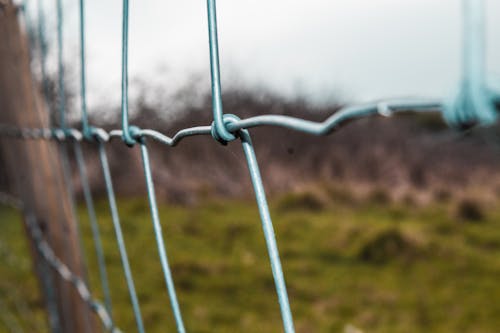Wire Gauge Basics
Gauge is a measurement of wire thickness. Wire gauge information is confusing to many people because it does not work like most of the measurement systems that non-technical people are familiar with. For one thing, each works in reverse; as the numbers get larger, the wire gets thinner. Another source of confusion is the fact that wire gauges do not correspond to convenient actual measurements. To truly understand wire gauge, you must know something about the way that wire is manufactured.
Manufacturing Wire
To make wire, manufacturers start with a rod of metal; for fencing, steel is the most common choice. This rod of metal is pulled through a metal plate with a hole in it. This metal plate is called a die, and the process of pulling the metal through the die is known as drawing. This process is repeated again and again with progressively smaller dies until the desired wire size is reached. Originally, the gauge of the wire referred to the number of times that the drawing process was done. Wire manufacturers started with Gauge 0 metal rods and repeated the drawing process as many times as necessary. In earlier times, the size of the dies and the wires produced through them could vary significantly from one shop to another, because of low-tech machining processes. As machining and manufacturing became more precise, this variance began to become a problem. This eventually led to the standardization of wire gauge information; from that point on, each gauge measurement has corresponded to a particular size of wire.
Sizing
In the United States and Canada, the typical standard for wire gauge is called the American Wire Gauge. In this system, the diameter of wire of a particular gauge is determined by a mathematical formula. Using this formula, manufacturers are free to develop wire of any arbitrary gauge, including half or other fractional gauges. Here is a list of common wire gauges that are used in fencing and their corresponding measurements:
- 8.5 gauge - 0.155 inch
- 9 gauge - 0.1483 inch
- 10.5 gauge - 0.128 inch
- 11 gauge - 0.1205 inch
- 12.5 gauge - 0.099 inch
- 14 gauge - 0.080 inch
- 16 gauge - 0.0625 inch
- 18 gauge - 0.0475 inch
- 20 gauge - 0.0348 inch
- 21 gauge - 0.0317 inch
- 23 gauge - 0.0258 inch
- 27 gauge - 0.0173 inch
Different gauges of wire and different materials have different properties for flexibility, durability, and electrical conductivity, any or all of which may impact their usefulness as fencing material. Your specific needs will determine what gauge of wire is best for your fence.
Reputable Vendors
In many cases, the choice of wire gauge will be made for you when you choose a particular style and type of fence. It is good to understand wire gauge information, but it is best not to get too caught up in it. Rather than looking for a fence made of a particular gauge of wire, check out fences in person whenever possible, and choose a fence that feels sturdy. When this is impossible, be sure to deal with an experienced, reputable vendor that can offer you more than just a number. If you call Louis Page, you will find ready help in discerning what gauge and style of fence is appropriate to your project. (866) 328-5018








